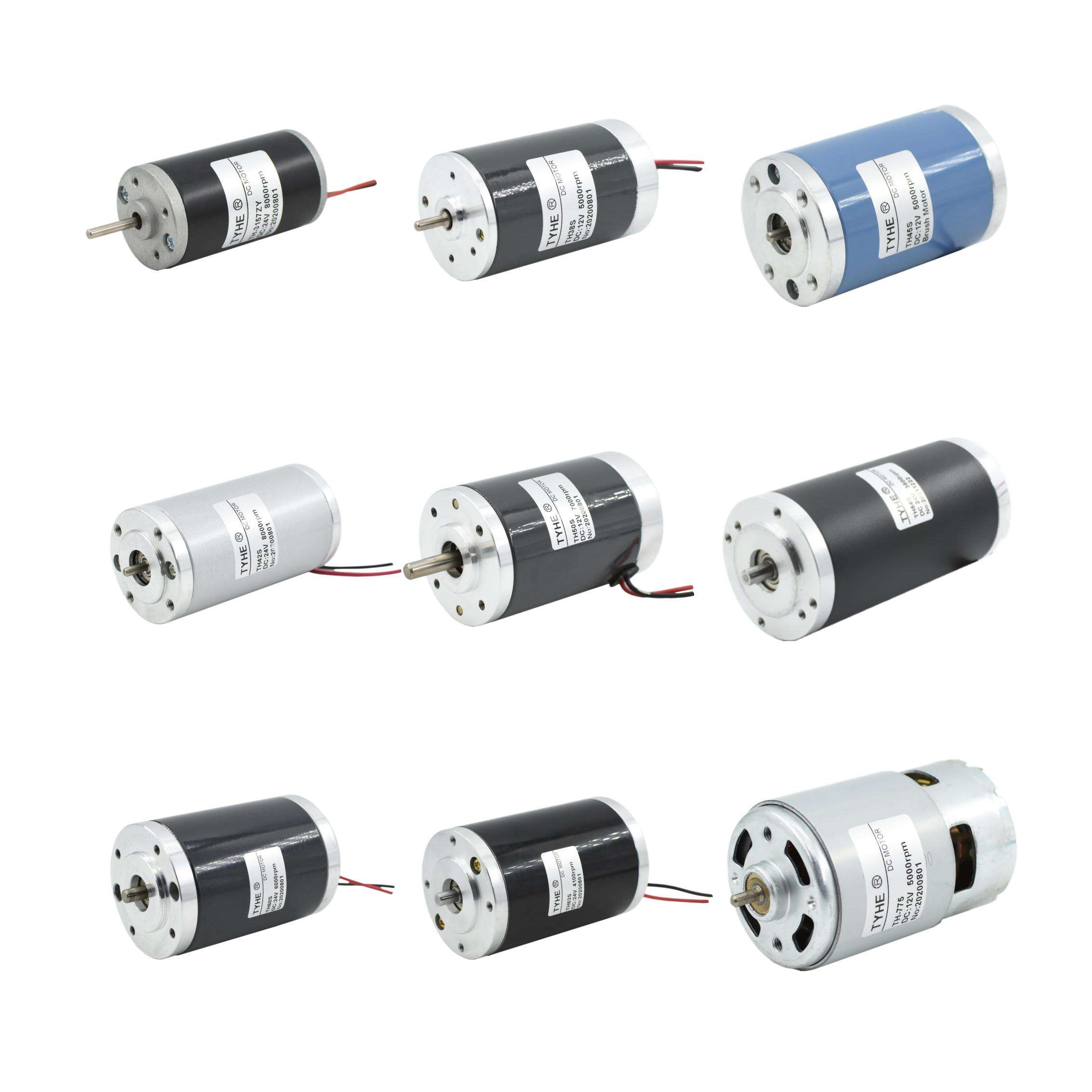Understanding the Fundamentals of Miniature Direct Current Motors
The world of electromechanical devices revolves around the ingenious small dc motor, a compact powerhouse that drives countless applications in modern technology. From household appliances to sophisticated robotics, these miniature marvels represent the perfect blend of simplicity and efficiency. Understanding their specifications is crucial for engineers, hobbyists, and manufacturers alike who seek to harness their potential effectively.
Small dc motors have revolutionized the way we approach compact mechanical solutions. Their versatility spans across industries, powering everything from dental tools to automotive components. These motors convert electrical energy into mechanical motion through electromagnetic principles, offering reliable performance in a space-efficient package.
Essential Technical Specifications
Voltage and Current Requirements
The operating voltage is a critical parameter when selecting a small dc motor. Most compact motors operate within a range of 1.5V to 24V DC, with common variants running at 3V, 6V, or 12V. The voltage rating directly influences the motor's speed and torque output, making it a crucial consideration for specific applications.
Current draw is equally important, as it determines the power consumption and efficiency of the motor. A typical small dc motor might draw anywhere from a few milliamps to several amps, depending on its size and load requirements. Understanding both the starting current and running current helps in designing appropriate power supply systems and protective circuits.
Speed and Torque Characteristics
The relationship between speed and torque is fundamental to motor performance. Small dc motors typically operate at speeds ranging from 1,000 to 15,000 RPM under no-load conditions. However, these speeds decrease as the load increases, following an inverse relationship with torque output.
Torque specifications include both starting torque and running torque values. A small dc motor might provide anywhere from a few gram-centimeters to several kilogram-centimeters of torque, depending on its design and size. Understanding these parameters ensures optimal motor selection for specific mechanical requirements.
Physical Dimensions and Construction
Size Categories and Mounting Options
Physical dimensions of small dc motors typically range from ultra-compact models measuring just a few millimeters to larger versions spanning several centimeters. Common form factors include cylindrical and box-type designs, each offering unique mounting solutions.
Mounting considerations include shaft configuration, mounting holes, and overall footprint. Many small dc motors feature standardized mounting patterns, allowing for easy integration into various devices. The mounting method significantly impacts vibration handling and overall system reliability.
Materials and Build Quality
The construction materials of a small dc motor greatly influence its durability and performance. High-quality motors typically feature precision-machined components, including copper windings, rare earth magnets, and hardened steel shafts. The bearing system, which may use ball bearings or sleeve bearings, affects both the motor's lifespan and operational characteristics.
Housing materials range from zinc alloy to engineering plastics, each offering different benefits in terms of heat dissipation, weight, and durability. The choice of materials directly impacts the motor's resistance to environmental factors such as temperature, humidity, and mechanical stress.

Performance Considerations and Applications
Efficiency and Power Consumption
The efficiency of a small dc motor typically ranges from 50% to 80%, depending on design quality and operating conditions. This efficiency rating becomes crucial in battery-powered applications where power conservation is essential. Modern designs incorporate features like low-friction bearings and optimized magnetic circuits to maximize efficiency.
Power consumption patterns vary significantly across different operating modes. Understanding the relationship between input power and mechanical output helps in selecting the right motor for specific energy requirements. This becomes particularly important in portable and battery-operated devices.
Application-Specific Requirements
Different applications demand specific characteristics from small dc motors. Robotics applications might prioritize precise speed control and positioning capabilities, while automotive applications might focus on reliability under varying temperature conditions. Understanding these application-specific requirements ensures optimal motor selection and implementation.
Environmental considerations play a crucial role in motor selection. Factors such as operating temperature range, moisture resistance, and dust protection capabilities must align with the intended usage environment. This might necessitate special features like sealed housings or temperature-resistant materials.
Frequently Asked Questions
How long can a small DC motor operate continuously?
The continuous operation time of a small dc motor depends on several factors, including design quality, operating conditions, and cooling provisions. Under proper conditions, quality motors can run for thousands of hours. However, it's essential to maintain proper voltage levels and adequate cooling to prevent premature wear.
What determines the speed of a small DC motor?
The speed of a small dc motor is primarily determined by the applied voltage, load conditions, and internal construction. Higher voltage generally results in higher speed, while increased load reduces speed. The number of windings and magnetic field strength also play crucial roles in determining the motor's speed characteristics.
How can I extend the lifespan of my small DC motor?
To maximize the lifespan of a small dc motor, maintain proper operating conditions including correct voltage supply, adequate cooling, and appropriate load levels. Regular maintenance, such as checking brush wear in brushed motors and ensuring proper lubrication in bearing systems, can significantly extend operational life. Additionally, protecting the motor from dust, moisture, and excessive vibration helps prevent premature failure.

